The Double Cleansing Revolution: Why Your Skin Needs It
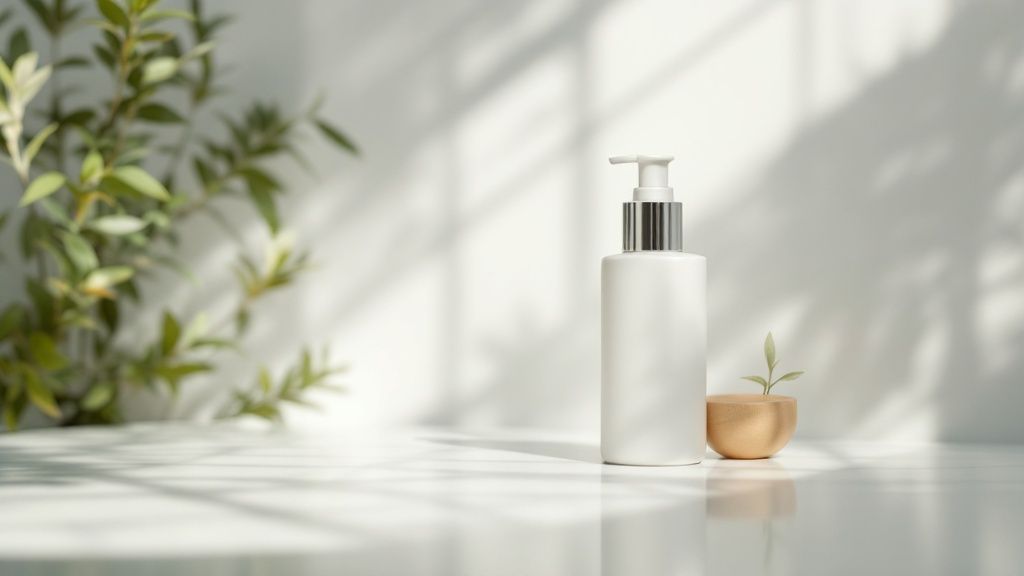
For years, many of us used a single cleanser, thinking it was enough to remove the day's dirt and grime. Surprisingly, this often leaves quite a bit of residue behind. Imagine trying to clean greasy dishes with only water – it wouldn't be very effective, would it? Likewise, water alone, or even a single cleanse, can't fully remove the makeup, sunscreen, sebum, and pollutants that build up on our skin. This is where the magic of double cleansing comes in.
Double cleansing, a core practice in the Korean beauty (K-beauty) movement, is a two-step process. First, you use an oil-based cleanser, followed by a water-based cleanser. This method offers a complete approach to cleaning your skin, targeting different impurities effectively. The oil-based cleanser attracts oil-based debris like makeup, sunscreen, and excess sebum. This important step preps the skin for the second cleanse.
The water-based cleanser then removes any remaining water-soluble impurities, such as sweat and dirt. This two-step approach ensures a truly clean base, allowing your other skincare products to penetrate deeper and work better. This means your serums, moisturizers, and treatments can finally reach their full potential, resulting in healthier, more radiant skin.
The global facial cleansing balm market, a key product in double cleansing, was valued at $507.84 million in 2023. It's projected to grow by 11.7% annually through 2030, showing the increasing popularity of this technique. This growth is driven by the K-beauty movement, which emphasizes double cleansing as a fundamental skincare step. Find more detailed statistics here: Facial Cleansing Balm Market Report
Why Double Cleansing Is Essential for Clear Skin
While single cleansing might seem adequate, it often doesn't achieve truly clean skin. Long-wearing makeup and many sunscreens are designed to be water and sweat-resistant. A single water-based cleanser struggles to break down these formulas, leaving residue behind.
Environmental pollutants, increasingly common in our surroundings, can also stick to the skin, contributing to dullness, irritation, and even premature aging. Double cleansing offers a solution by effectively removing these stubborn impurities. The oil-based cleanser dissolves and lifts away oil-based debris, while the water-based cleanser removes any remaining residue. This thorough cleansing not only prevents clogged pores and breakouts but also improves skin texture and tone over time. Read also: How to Master Your Skincare Routine
Debunking the Myths of Double Cleansing
Some people believe double cleansing is too harsh or unnecessary, especially for those with dry or sensitive skin. However, when done correctly with the right products, double cleansing can actually benefit all skin types.
Choosing gentle, non-comedogenic formulas is key to avoiding irritation and dryness. The improved absorption of other skincare products can also boost hydration and overall skin health. By removing the layer of impurities, double cleansing allows your moisturizers and treatments to penetrate more deeply, delivering more effective results.
Finding Your Perfect First Cleanser: Oil-Based Options
Understanding Oil-Based Cleansers
Oil-based cleansers work wonders by attracting and binding to impurities like makeup, sunscreen, and excess oil (sebum). This process, driven by molecular attraction, effectively lifts away debris without disrupting the skin's protective barrier. If you're curious about the double cleansing method, starting with an oil-based cleanser is crucial. It gently preps the skin for the second, water-based cleanse, ensuring a truly deep clean.
This initial step is all about dissolving those stubborn impurities that cling to your skin throughout the day. Think of it as pre-treating your face before the main wash. This gentle approach sets the stage for a more effective overall cleansing routine.
Key Ingredients and What to Avoid
Choosing the right oil cleanser involves understanding its ingredients. Look for a formula that balances cleansing power with moisturizing properties, especially if you have sensitive or acne-prone skin.
- Lightweight botanical oils: These are ideal for delicate skin, providing gentle cleansing without irritation.
- Non-comedogenic formulas: Opt for cleansers labeled "non-comedogenic," meaning they won't clog pores.
- Avoid heavy mineral oils: These can sometimes trap impurities, counteracting the cleanser's purpose.
Considering these factors will help you select a product tailored to your skin’s specific needs, while also streamlining your skincare routine.
Expert Insights and Market Trends
Skincare experts, like Valerie Aparovich, advocate for the double cleansing method, emphasizing the efficiency of oil-based cleansers in dissolving sebum and impurities. This isn't just anecdotal evidence; market trends confirm the rising popularity of this cleansing approach. The facial cleansing balm market, for example, is projected to reach $1.46 billion by 2031, growing at an impressive 11.5% CAGR. The recent launch of Hero Cosmetics’ Dissolve Away Cleansing Balm further demonstrates the effectiveness of this method, particularly for sensitive and oily skin types. Read the full research here.
This growth reflects a broader shift in skincare towards gentler, more effective cleansing methods. Consumers are increasingly recognizing the importance of maintaining a healthy skin barrier while achieving a thorough cleanse.
Oil-Based Cleanser Comparison by Skin Type
To help you navigate the world of oil-based cleansers, we've compiled a comparison table highlighting the best options for different skin types. This table outlines key ingredients, usage instructions, and typical price ranges.
| Cleanser Type | Best For | Key Ingredients to Look For | How to Use | Average Price Range |
|---|---|---|---|---|
| Balm | Dry & Sensitive | Emollients, botanical oils | Massage onto dry skin, then rinse off | $15-$25 |
| Cleansing Oil | Oily & Acne-Prone | Lightweight plant extracts | Apply to wet skin, emulsify, and rinse | $10-$20 |
| Micellar Water | Normal & Combination | Micelles with gentle surfactants | Swab over face, no rinsing needed | $8-$18 |
This table provides a quick guide for choosing an oil-based cleanser based on your skin type and preferred ingredients. Remember to always patch test new products to ensure compatibility with your skin. By understanding these options, you can confidently choose the perfect oil-based cleanser to incorporate into your double cleansing routine, leading to a cleaner, more balanced complexion.
Completing The Cleanse: Water-Based Formulas That Deliver

Choosing the right water-based cleanser is the second crucial step in an effective double cleansing routine. This step goes beyond surface cleaning; it refines your skin after the initial oil-based cleanse. The oil cleanser lifts away makeup and excess sebum, while the water-based cleanser penetrates the skin to remove water-soluble impurities.
A key factor in selecting a water-based cleanser is its pH level. Maintaining a balanced pH helps preserve your skin's natural defenses. Using cleansers with harsh surfactants, however, can lead to irritation and weaken the skin barrier. The cleanser's texture and formulation also play a role in how refreshed your skin feels afterward.
Understanding Cleanser Types
Different types of water-based cleansers—gel, foam, cream, and milk—offer distinct advantages for various skin types. Choosing the right one can significantly impact your skin's health and appearance.
Consider these benefits when making your selection:
- Gentle Removal: Effectively removes sweat and any remaining dirt.
- Barrier Support: Maintains a healthy pH to protect against environmental stressors.
- Enhanced Absorption: Prepares your skin to better absorb moisturizers, serums, and other treatments.
To help you choose the best cleanser for your skin, here's a quick comparison of common water-based formulations:
| Cleanser Type | Texture | Ideal For | Key Benefit | How To Use |
|---|---|---|---|---|
| Gel | Lightweight | Oily or combination skin | Deep cleans without heavy residue | Apply to damp skin and massage gently |
| Foam | Airy | Normal to oily skin | Removes impurities with rich lather | Work into a foam and rinse thoroughly |
| Cream | Rich | Dry or sensitive skin | Adds moisture while cleansing | Use as a final rinse to leave skin soft and hydrated |
| Milk | Fluid | Mature or delicate skin | Soothes and calms while cleansing | Gently massage over skin and rinse with cool water |
This table clarifies the differences between water-based cleansers so you can find one that perfectly complements your oil-based cleanser. A well-chosen water-based formula not only cleanses but also protects your skin, contributing to long-lasting clarity. After your oil cleanse, consider incorporating products like a gentle Water Based Primer to further enhance your skincare routine.
The Perfect Double Cleansing Technique: Master Class
Double cleansing isn't just about choosing the right products; it's about the technique. Just like an artist needs the right brushstrokes, you need the right method to make double cleansing truly effective. This routine can become a transformative ritual for your skin.
Step-by-Step Guide to Double Cleansing
Let's break down how to double cleanse effectively:
-
Step 1: Oil Cleanse Application: Start with dry hands and a dry face. Dispense your oil cleanser, warm it between your palms, and gently massage it onto your face in circular motions. Focus on areas with makeup or sunscreen, especially the T-zone. Massage for about 60 seconds to thoroughly break down impurities.
-
Step 2: Emulsification and Rinse: Wet your hands with lukewarm water and continue massaging. The oil cleanser will turn milky as it emulsifies, indicating it's ready to rinse. Rinse thoroughly with lukewarm water until no residue is left.
-
Step 3: Water-Based Cleanse Application: Follow your oil cleanse with a water-based cleanser. A gentle Water Based Primer can be a good option. Apply it to damp skin, massaging gently for 30-60 seconds, again focusing on the T-zone. This second cleanse removes remaining water-soluble impurities.
-
Step 4: Final Rinse and Dry: Rinse your face with lukewarm water until all cleanser is gone. Gently pat your skin dry with a clean, soft towel. Avoid rubbing to prevent irritation.
Tailoring Your Technique
Adjust your technique based on your specific needs. For waterproof makeup, hold the oil cleanser on your eyes for a few extra seconds before massaging. If you wear mineral sunscreen, ensure thorough massage where applied. After exercise, double cleansing is particularly effective for removing sweat and oil.
Troubleshooting Common Issues
Experiencing makeup residue or a greasy film? You might not be emulsifying the oil cleanser properly or using enough product. Adjust as needed. If your skin feels dry or tight, try a more hydrating water-based cleanser or reduce the frequency of double cleansing. Double cleansing is growing in popularity alongside skincare trends like "functional beauty." Drive Research found that 74% of women use three or more skincare products, highlighting a desire for thorough skincare routines. Explore this topic further. By understanding the nuances of double cleansing, you can unlock its full potential for clear, healthy skin.
Customizing Your Double Cleanse: Every Skin Type Covered
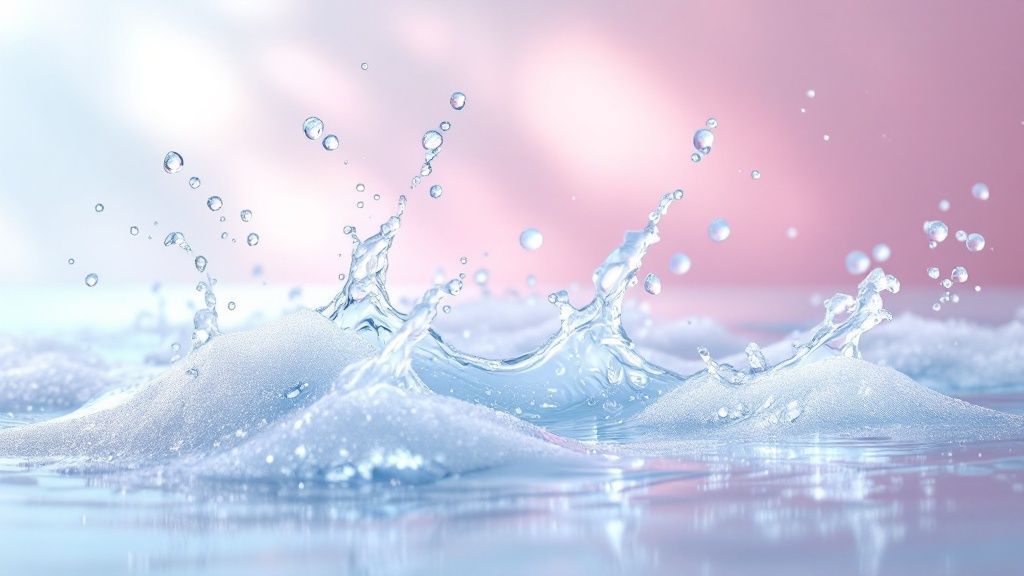
The true power of double cleansing lies in its adaptability. Just as you wouldn't use the same shampoo for every hair type, your cleansing routine should be tailored to your skin. This section explains how to personalize your double cleanse for your unique needs. Check out this guide on How to master your Japanese skincare routine for more tips and product recommendations.
Tailoring Your Cleanse To Your Skin
Double cleansing, using an oil-based cleanser followed by a water-based cleanser, is highly effective. However, choosing the right products and methods for your skin type and concerns is crucial.
The following table provides a detailed guide on adapting double cleansing for various skin types:
To help you personalize your double cleanse, we've compiled the following table:
Double Cleansing Adaptations by Skin Type
| Skin Type/Condition | Oil Cleanser Recommendation | Water Cleanser Recommendation | Frequency | Special Considerations |
|---|---|---|---|---|
| Oily Skin | Lightweight cleansing oil designed to dissolve sebum | Light, foaming cleanser | Twice daily | Avoid heavy balms or creams |
| Combination Skin | Moderately hydrating cleansing oil | Cleanser targeted to T-zone and cheek concerns (e.g., gel for T-zone, cream for cheeks) | Twice daily | Balance is crucial; adjust based on seasonal changes |
| Dry Skin | Rich, nourishing cleansing oil or balm | Creamy, hydrating cleanser | Once or twice daily | Avoid harsh foaming cleansers |
| Sensitive Skin | Fragrance-free, hypoallergenic cleansing oil | Mild, calming cleanser | Once or twice daily, or as needed | Patch test new products |
| Mature Skin | Cleansing oil rich in antioxidants | Hydrating cleanser that improves skin elasticity | Once or twice daily | Look for ingredients that promote cell turnover |
| Acne-Prone Skin | Non-comedogenic cleansing oil | Cleanser with salicylic acid or benzoyl peroxide | Twice daily | Consult a dermatologist if experiencing persistent breakouts |
This table summarizes key adaptations for double cleansing based on individual skin needs. Remember to always consider your specific concerns when choosing products.
Adapting To Changing Needs
Your skin's needs are dynamic. Factors like climate, hormones, and lifestyle influence how your skin reacts to cleansing.
-
Seasonal Changes: Winter might require a richer oil cleanser due to dry air. A lighter option might suffice in summer.
-
Hormonal Fluctuations: Hormonal changes can make skin oilier or more sensitive, necessitating adjustments to your routine.
-
Lifestyle Factors: Wearing heavy makeup or sunscreen requires a more thorough double cleanse. Living in a polluted environment also benefits from double cleansing.
Targeting Specific Conditions
For conditions like rosacea, eczema, or perioral dermatitis, consult a dermatologist for personalized advice. The wrong products can trigger flare-ups. The right routine, with gentle ingredients and avoidance of irritants, can soothe and support skin health. For example, those with rosacea should avoid harsh scrubs and fragrances.
By understanding your skin's unique needs and adjusting your routine, you can transform double cleansing into a personalized experience for optimal results.
Avoiding Double Cleansing Pitfalls: What Experts Know
Double cleansing is a popular skincare practice, but even with the best intentions, it can sometimes cause irritation if not done correctly. By learning from estheticians' observations, we can identify the most frequent mistakes and offer practical solutions to ensure your double cleansing routine is both effective and gentle.
Common Mistakes and How to Fix Them
Even seasoned skincare enthusiasts can fall into these common double cleansing traps:
-
Incorrect Water Temperature: Using water that's too hot can strip your skin of its natural oils, resulting in dryness and irritation. On the other hand, water that's too cold may not effectively dissolve makeup and impurities. The solution: Use lukewarm water for both cleansing steps to balance effective cleaning with gentle care.
-
Too Much Pressure: Scrubbing too hard, even with soft tools, can damage the skin barrier, leading to inflammation, redness, sensitivity, and breakouts. The solution: Use gentle, circular motions with your fingertips. Let the cleanser, not the pressure, do the work.
-
Skipping the Oil Cleanse: Even without makeup, an oil-based cleanser is necessary to remove environmental pollutants and sunscreen. Skipping this step can compromise long-term skin health. The solution: Incorporate the oil cleanse into your daily routine, regardless of makeup use, to maintain clear, healthy skin. For more tips and product recommendations, you might be interested in: How to master your Japanese beauty routine.
Recognizing the Warning Signs
Here are some signs your double cleansing routine might need adjustments:
-
Persistent Residue: If your skin feels filmy or unclean after cleansing, you might need to adjust your technique or switch to a different cleanser.
-
Excessive Dryness: Over-cleansing, especially with harsh cleansers, can strip the skin's natural moisture barrier, resulting in tightness and dryness.
-
Unexplained Breakouts: Using incompatible cleansers or incorrect cleansing techniques can disrupt the skin's balance and lead to breakouts.
Troubleshooting Your Routine
Simple adjustments can often resolve double cleansing issues:
-
Switch Cleansers: If your current cleansers aren't effective, explore different formulations. Look for gentle, non-comedogenic options.
-
Adjust Frequency: If your skin is dry or sensitive, consider reducing double cleansing to once a day or a few times a week.
-
Consult a Dermatologist: For persistent skin issues, a dermatologist can determine the underlying cause and recommend the best cleansing routine and products for your skin.
By understanding these potential problems and their solutions, you can refine your double cleansing routine for optimal results, enjoying truly clean and healthy skin.
Beyond The Cleanse: Maximizing Your Double Cleansing Results
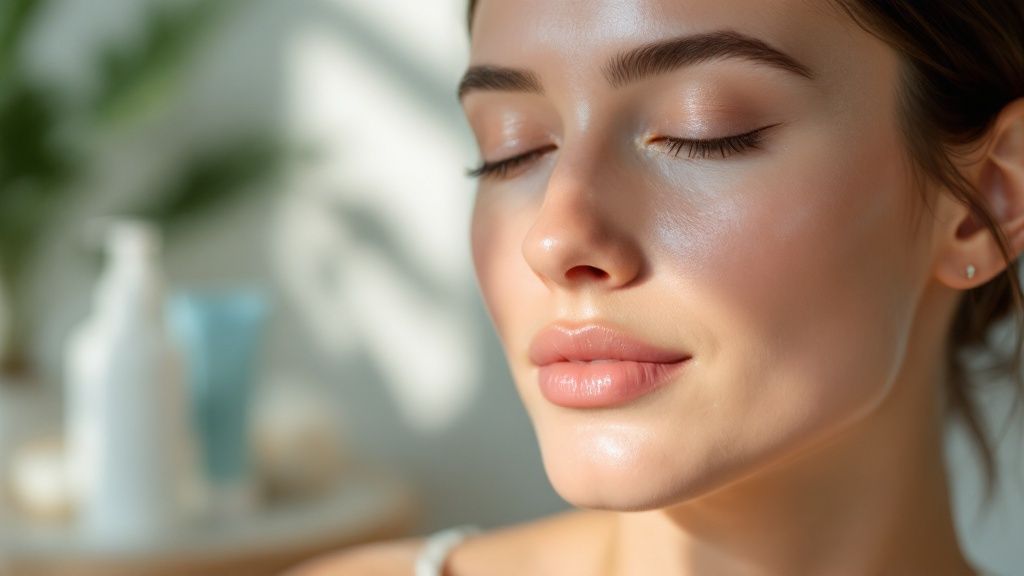
Double cleansing, using an oil-based cleanser followed by a water-based cleanser, is more than just a cleaning method. It's the foundation of a thriving skincare routine. Properly removing impurities sets the stage for the rest of your products to work effectively.
Enhancing Product Penetration
Think of your skin like a sponge. A dry, dirty sponge won't absorb water well. Similarly, skin covered in makeup, sunscreen, and pollutants prevents serums and moisturizers from absorbing properly. Double cleansing creates a clean slate. This allows products to penetrate deeper, delivering optimal results. This means your serums and creams can finally reach their full potential.
Optimizing Treatment Timing
Applying your serums and moisturizers immediately after cleansing is key. Pat your skin dry and then apply your products to lock in hydration and maximize absorption. This allows active ingredients to penetrate the skin effectively, enhancing their performance. For example, applying a vitamin C serum to freshly cleansed skin ensures better absorption and brighter results.
Complementary Practices
Double cleansing pairs well with other skincare habits:
- Exfoliation: Gentle exfoliation 1-2 times a week after double cleansing removes dead skin cells and further enhances product absorption. Avoid harsh scrubs, especially if you have sensitive skin.
- Facial Massage: Incorporating facial massage during your cleansing routine stimulates circulation and lymphatic drainage. This can improve skin tone and reduce puffiness.
Double Cleansing In Your Routine
Double cleansing fits into both morning and evening routines:
- Morning: A quick double cleanse preps your skin for the day, ensuring optimal absorption of sunscreen and makeup.
- Evening: A more thorough double cleanse removes the day's buildup, preparing your skin for nighttime repair.
Realistic Expectations And Progress Evaluation
While double cleansing offers many benefits, it’s important to have realistic expectations. Don’t expect immediate changes. Consistent double cleansing, over time, leads to visible improvements in skin texture, clarity, and hydration. You'll also notice your other skincare products perform better. Track your skin's progress and adjust your routine as needed. For example, if your skin feels dry, try a more hydrating cleanser or reduce the frequency of double cleansing.
For an exceptional selection of Japanese skincare products, visit Buy Me Japan. They offer a curated range of high-quality beauty products, convenient shipping, and exclusive discounts. Start your journey to clearer, healthier skin today!
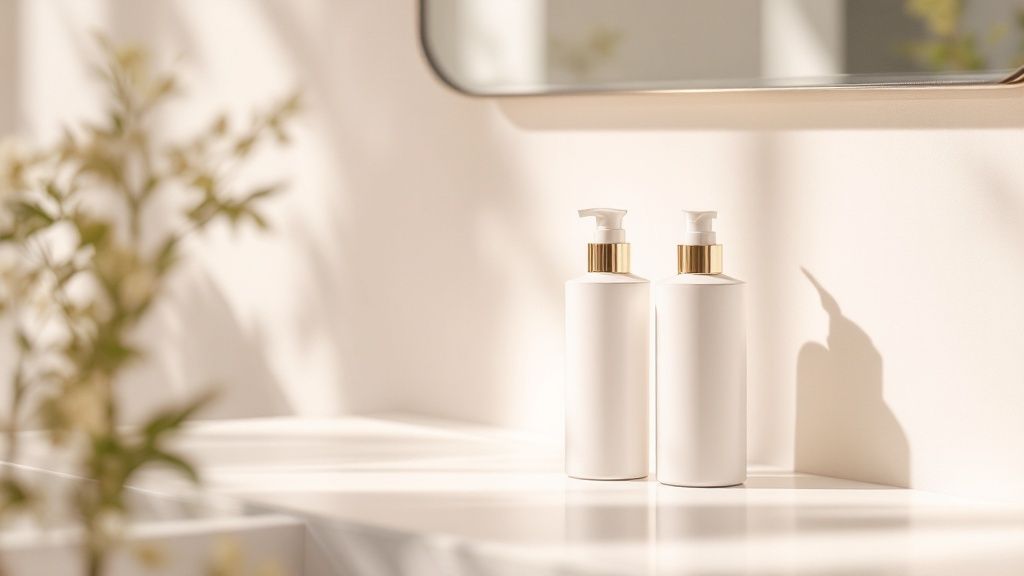

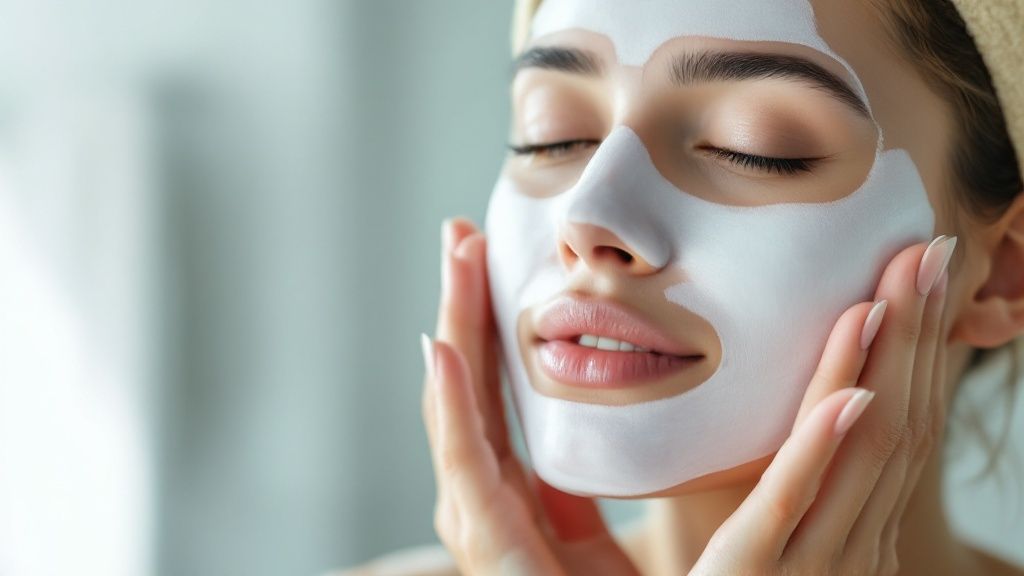
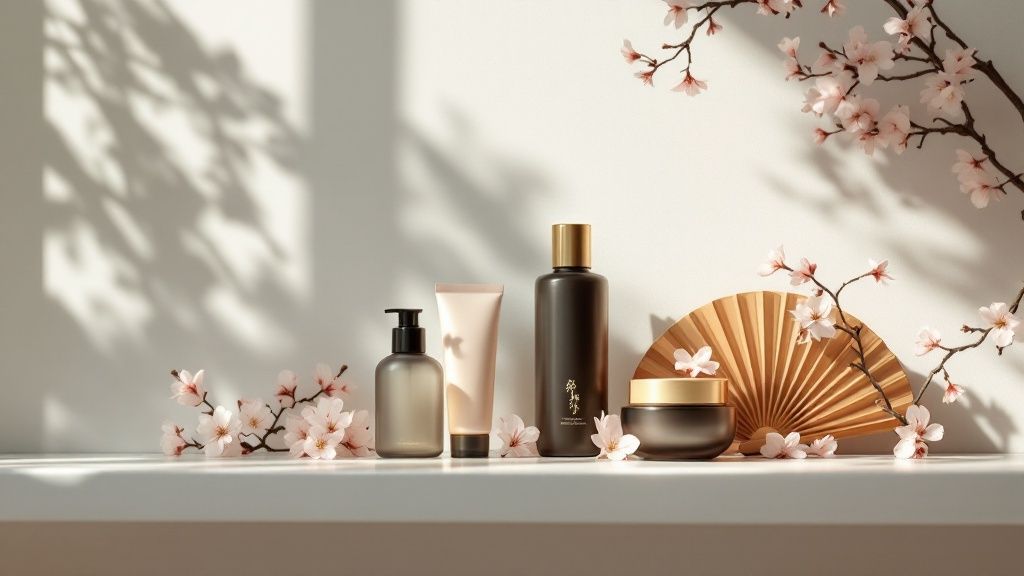
Share:
7 Delicious Matcha Recipes for Weight Loss
Essential Japanese Skincare Steps for Radiant Skin